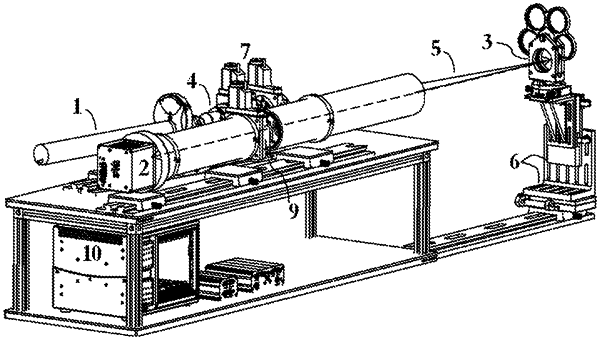| CPC G02B 21/0092 (2013.01) [G01J 4/04 (2013.01); G01N 21/21 (2013.01); G01N 2021/8477 (2013.01); G02B 21/0068 (2013.01)] | 16 Claims |

|
1. A method of producing one or more material orientation images of a sample using a polarimeter having multiple independent polarization channels comprising the steps of:
producing a beam from a source of controlled electromagnetic radiation that propagates along a path terminating at an imaging detector with the sample positioned there between;
positioning a first polarization modulator configured to switch serially among multiple independent settings in the path preceding the sample;
positioning a second polarization modulator in the path following the sample wherein the second polarization modulator is independent of the first polarization modulator and the second polarization modulator is configured to switch serially among the multiple independent settings, wherein a combination of the settings of the first and second polarization modulators defines an independent polarization channel and wherein the multiple independent polarization channels are tuned to measure a partial Mueller matrix of the sample that is specified according to a priori Mueller matrices known from a model or measurement corresponding to the sample or a sample type;
positioning the imaging detector to receive the electromagnetic radiation from the second polarization modulator, wherein the imaging detector comprises one or more pixels and collects a set of no more than ten polarization images corresponding to no more than ten independent polarization channels;
executing a processor connected with a memory, wherein the processor is configured to execute a classification algorithm stored in the memory that maps the set of polarization images to one or more material orientation images by combining the collected set of polarization images to form orientation feature images that correspond to the one or more material orientation images as described by the model; and
applying an invertible mapping function as determined by the model between the orientation feature images and one or more orientation parameters of the sample,
wherein the sample is comprised of crystals and wherein the model is an electrodynamic model that determines the invertible mapping function between the orientation feature images and one or more of i) a trend angle of the crystal c-axis and ii) a plunge angle of the crystal c-axis.
|